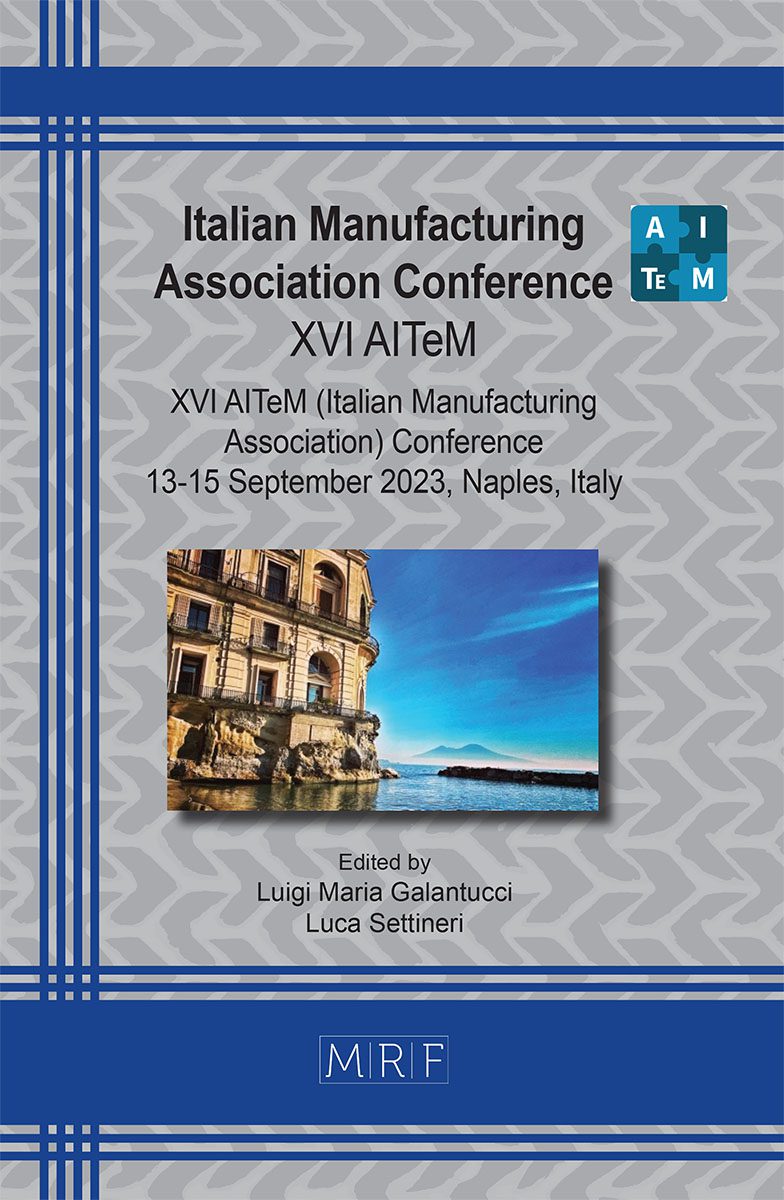Preliminary evaluation of an additive manufacturing procedure for producing patient-specific upper-limb orthotic devices
Francesca Sala, Mariangela Quarto, Gianluca D’Urso, Claudio Giardini
download PDFAbstract. In the orthopedic field, the need for patient-specific devices is crucial to ensure a rapid and successful care treatment. The traditional techniques for manufacturing customized orthopedic systems, specifically orthoses, are laborious and present multiple and time-consuming steps. The present research analyzed the possibility of optimizing the conventional process for manufacturing personalized orthoses by leveraging the principles of Reverse Engineering (RE) and Additive Manufacturing (AM). Digital orthotic models of different anatomical regions were obtained using 3D laser scanning and semi-automated CAD processing, whilst, the prototypes were produced using a Fused Deposition Modelling (FDM) printer and polymeric filaments suitable for the intended use. Furthermore, topological optimization was employed to improve the shape and the weight of the different medical devices. Potential advantages and drawbacks of the discussed procedure were evaluated through a preliminary indication of production times and costs.
Keywords
Material Extrusion, Reverse Engineering, Health Care
Published online 9/5/2023, 8 pages
Copyright © 2023 by the author(s)
Published under license by Materials Research Forum LLC., Millersville PA, USA
Citation: Francesca Sala, Mariangela Quarto, Gianluca D’Urso, Claudio Giardini, Preliminary evaluation of an additive manufacturing procedure for producing patient-specific upper-limb orthotic devices, Materials Research Proceedings, Vol. 35, pp 103-110, 2023
DOI: https://doi.org/10.21741/9781644902714-13
The article was published as article 13 of the book Italian Manufacturing Association Conference
![]() Content from this work may be used under the terms of the Creative Commons Attribution 3.0 license. Any further distribution of this work must maintain attribution to the author(s) and the title of the work, journal citation and DOI.
Content from this work may be used under the terms of the Creative Commons Attribution 3.0 license. Any further distribution of this work must maintain attribution to the author(s) and the title of the work, journal citation and DOI.
References
[1] M. Javaid, A. Haleem, Additive manufacturing applications in orthopaedics: A review, J. Clin. Orthop. Trauma. 9 (2018) 202–206. https://doi.org/10.1016/J.JCOT.2018.04.008
[2] A. Abdudeen, J.E. Abu Qudeiri, A. Kareem, A.K. Valappil, Latest Developments and Insights of Orthopedic Implants in Biomaterials Using Additive Manufacturing Technologies, J. Manuf. Mater. Process. 2022, Vol. 6, Page 162. 6 (2022) 162. https://doi.org/10.3390/JMMP6060162
[3] Y.A. Jin, J. Plott, R. Chen, J. Wensman, A. Shih, Additive manufacturing of custom orthoses and prostheses – A review, Procedia CIRP. 36 (2015) 199–204. https://doi.org/10.1016/J.PROCIR.2015.02.125
[4] Y. Wang, Q. Tan, F. Pu, D. Boone, M. Zhang, A Review of the Application of Additive Manufacturing in Prosthetic and Orthotic Clinics from a Biomechanical Perspective, Engineering. 6 (2020) 1258–1266. https://doi.org/10.1016/J.ENG.2020.07.019
[5] I. Safaz, H. Türk, E. Yaşar, R. Alaca, F. Tok, I. Tuğcu, USE AND ABANDONMENT RATES OF ASSISTIVE DEVICES/ORTHOSES IN PATIENTS WITH STROKE -, Gulhane Med. J. 57 (2015) 142–144. https://doi.org/10.5455/GULHANE.152325
[6] A. Paoli, P. Neri, A. V. Razionale, F. Tamburrino, S. Barone, Sensor architectures and technologies for upper limb 3d surface reconstruction: A review, Sensors (Switzerland). 20 (2020) 1–33. https://doi.org/10.3390/S20226584
[7] F. Sala, M. Carminati, G. D’Urso, C. Giardini, A feasibility analysis of a 3D customized upper limb orthosis, Procedia CIRP. 110 (2022) 207–212. https://doi.org/10.1016/J.PROCIR.2022.06.038
[8] V. DeStefano, S. Khan, A. Tabada, Applications of PLA in modern medicine, Eng. Regen. 1 (2020) 76–87. https://doi.org/10.1016/J.ENGREG.2020.08.002































